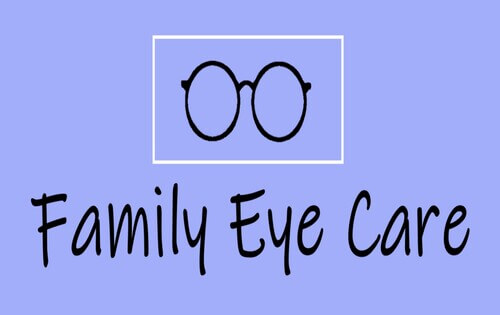Leading Cardiologist in Andalusia: Find Specialist Clinics Near You
Leading Cardiologist in Andalusia: Find Specialist Clinics Near You
Blog Article
The Advantages And Disadvantages of Different Refractive Surgeries for Improved Eyecare

LASIK Surgical Procedure
LASIK surgery is a generally executed refractive procedure that intends to deal with vision concerns such as nearsightedness, astigmatism, and farsightedness. Throughout the procedure, a thin flap is developed on the cornea, and a laser is used to reshape the underlying tissue, remedying the refractive error.
Among the main advantages of LASIK surgery is the quick improvement in vision experienced by many clients. Many individuals discover a substantial improvement in their sight shortly after the procedure, with marginal downtime needed for recuperation. Furthermore, LASIK is known for its high success price and reduced incidence of problems when performed by experienced cosmetic surgeons. Like any medical procedure, LASIK additionally brings some risks, consisting of dry eyes, glare, halos, and under or overcorrection of vision. It is necessary for people thinking about LASIK surgical procedure to go through an extensive analysis by an eye treatment professional to establish if they appropriate prospects for the procedure.
PRK Treatment
The PRK procedure, also known as Photorefractive Keratectomy, is a kind of refractive surgical treatment that intends to fix vision issues similar to LASIK surgical procedure. Unlike LASIK, which involves producing a flap in the cornea, PRK works with the surface area layer of the cornea. During the PRK procedure, the outer layer of the cornea, called the epithelium, is removed to allow reshaping of the underlying corneal cells with an excimer laser. This improving aids to remedy refractive errors such as farsightedness, nearsightedness, and astigmatism.
One of the advantages of PRK over LASIK is that it removes the danger of flap-related difficulties because no flap is produced throughout the surgical treatment. This can be helpful for individuals with slim corneas or those entailed in get in touch with sports where eye trauma is a possibility. The recuperation time for PRK is commonly longer contrasted to LASIK, as the outer layer of the cornea needs time to regenerate after the treatment. Regardless of the longer recovery duration, PRK can be an appropriate option for people looking for vision correction surgery.
SMILE Surgical Procedure
An innovative refractive surgical procedure strategy obtaining appeal in the area of ophthalmology is SMILE Surgical treatment. Little Laceration Lenticule Extraction (SMILE) is a minimally intrusive treatment that fixes vision by reshaping the cornea using a femtosecond laser. Unlike traditional LASIK surgery, SMILE Surgery includes producing a small laceration in the cornea to draw out a lenticule, which results in less disturbance to the corneal structure and possibly quicker recovery times.
One of the key advantages of SMILE Surgery is its ability to deal with nearsightedness (nearsightedness) and astigmatism with high precision, resulting in excellent visual outcomes for people. The minimally invasive nature of the treatment also lowers the danger of difficulties such as dry eye syndrome, making it a favorable choice for people seeking refractive surgical treatment.

LASEK Method
Having actually checked out the advantages and factors to consider of SMILE Surgery, another notable refractive surgical procedure technique worth checking out is the LASEK Strategy. LASEK, which stands for Laser-Assisted Subepithelial Keratectomy, is a kind of laser eye surgical treatment that aims to correct refractive errors such as nearsightedness (nearsightedness), hyperopia (farsightedness), and astigmatism.
Unlike LASIK, LASEK does not entail producing a corneal flap. Rather, throughout a LASEK treatment, the cosmetic surgeon utilizes a diluted alcohol service to loosen the slim outer layer of the cornea, known as the epithelium.
Among the key benefits of LASEK is that it can be suitable for individuals with slim corneas who may not be great candidates for LASIK. Additionally, LASEK generally results in minimal post-operative discomfort and a quicker healing time contrasted to PRK. The aesthetic healing process with LASEK may be a little longer than with LASIK.
Implantable Get In Touch With Lenses
Implantable Contact Lenses use a long-term vision adjustment remedy for people looking for an alternative to traditional get in touch with lenses or glasses. These lenses, also called phakic intraocular lenses, are surgically put into the eye to deal with refractive errors such as myopia (nearsightedness), hyperopia (farsightedness), and astigmatism. andalusia pediatrics. Unlike conventional call lenses that rest on the surface area of the eye, implantable site web get in touch with lenses work within the eye itself, giving clear vision without the demand for daily maintenance or removal
Among the vital benefits of implantable contact lenses is their durability. Once placed, they can stay in the eye indefinitely, providing steady and consistent vision modification. Furthermore, these lenses can be a superb option for people who are bad candidates for laser eye surgical procedure or who like a reversible vision improvement treatment.
Nonetheless, implantable call lenses do lug some risks, consisting of the possibility for cataracts or enhanced eye stress. It is vital for individuals considering this alternative to seek advice from an eye treatment specialist to identify if implantable get in touch with lenses are the best option for their certain needs and eye health.
Final Thought
In verdict, each kind of refractive surgical procedure has its own advantages and downsides. LASIK surgical procedure is popular for its fast recovery time, while PRK treatment may be suitable for people with slim corneas. SMILE surgery offers minimal click here to find out more pain during the click this link procedure, however LASEK technique might have a longer healing process. Implantable get in touch with lenses supply a choice for those that are not suitable prospects for typical surgeries. Individuals should speak with their eye care supplier to establish the very best alternative for their specific requirements.

Generally, SMILE Surgical treatment provides an appealing alternative for individuals looking to improve their vision via refractive surgical treatment.
Report this page